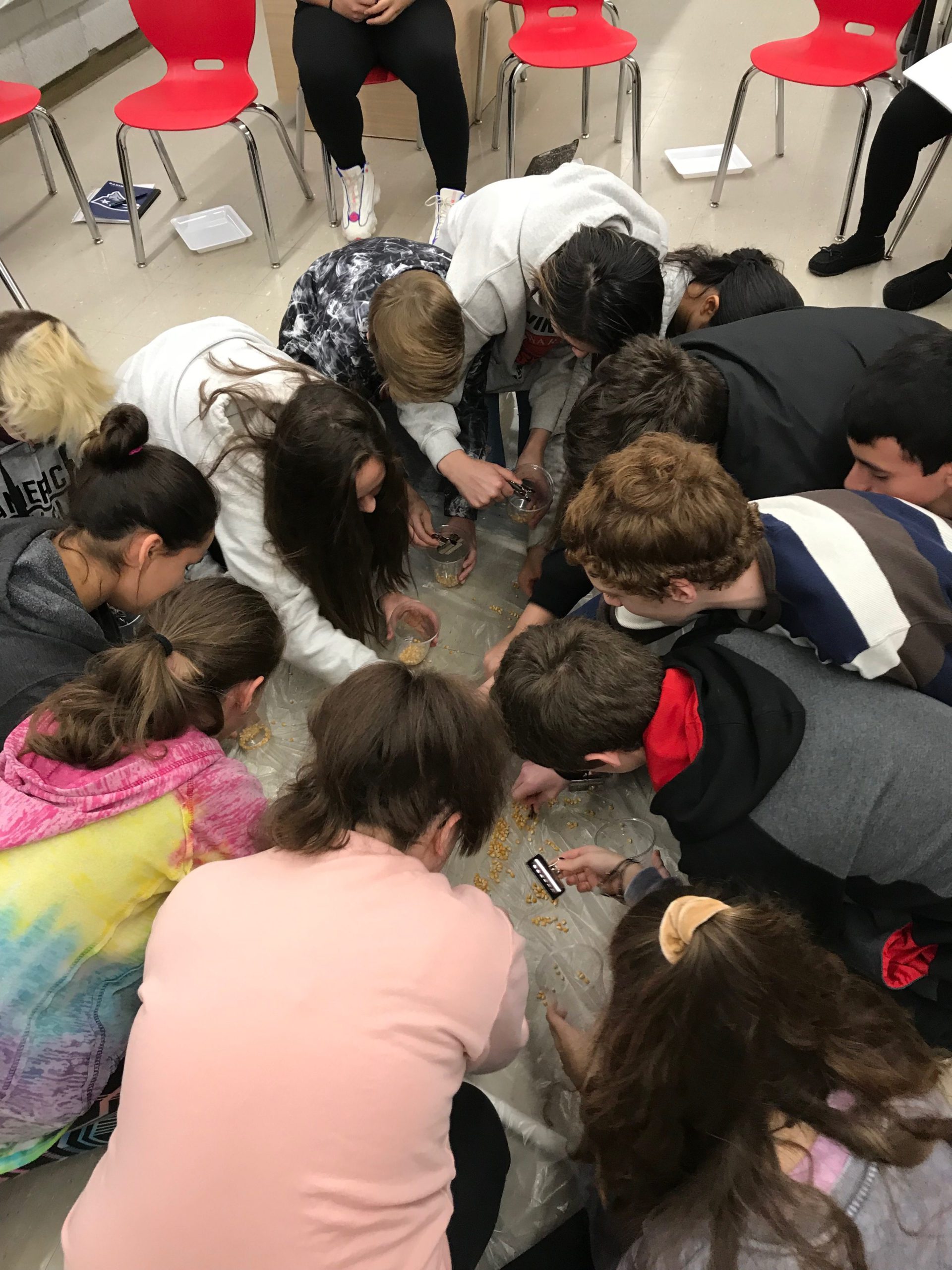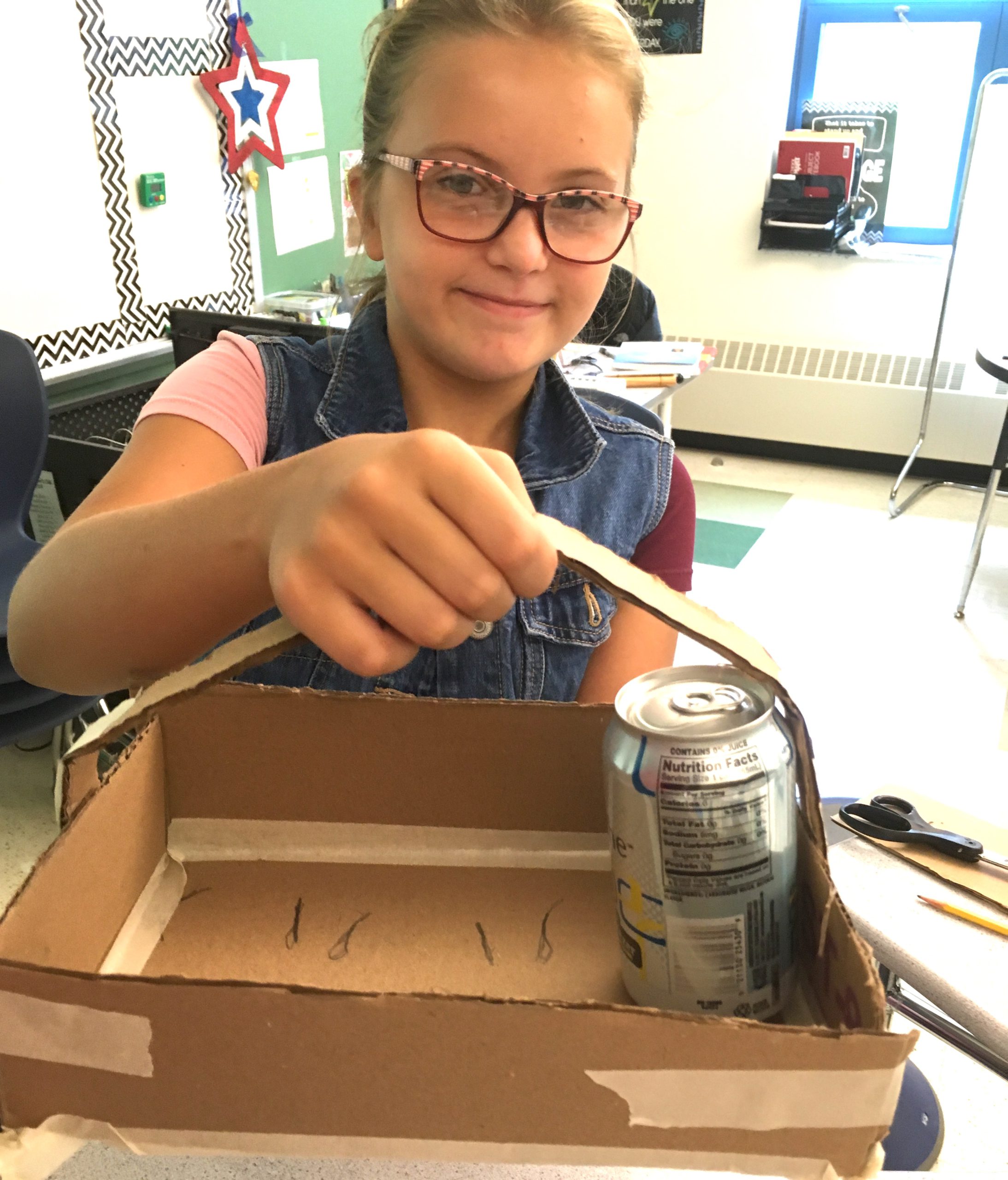An emerging science concept called phenomena-based learning—backed by the NGSS—taps into students’ natural desire to make sense of their world.
This approach encourages students to observe natural phenomena, such as a rising tide or a glass shattered by sound. They can then investigate why it occurs.
Students also learn that the approach mirrors how actual scientists find answers through reasoning and inquiry.
“I like to think of phenomena as breadcrumbs that teachers are going to use to guide students along learning paths,” says Ted Willard, assistant director for science standards for the National Science Teachers Association.
Unlike in a traditional teacher-led lesson, students in NGSS phenomena-based learning lead by asking questions.
They also collaborate, discover connections, design models, and ultimately, make sense of what they observe.
“This inquiry-based approach avoids ‘intellectual bulimia’ in which students just learn words to spit back out on a test,” says Willard.
“By teaching them the reasoning process, they get a deeper understanding of science concepts.”
The science doesn’t have to be ‘phenomenal’
In terms of determining what to study, phenomena don’t always have to be phenomenal, says Willard. “For example, you can start a lesson by simply opening a jar of mint oil and letting the scent drift through the classroom. Then you ask students, ‘How do you think the smell gets from that bottle to your nose?’”
Local activities—such as going outside to examine the peeling bark of a birch tree—allow students to make connections to the world they live in, says Carolyn Higgins, an eighth-grade teacher in Warwick Public Schools in Rhode Island, and former president of the state’s science teachers association.
Do’s and don’ts: Tips for teaching phenomena-based science
“You don’t have to spend a lot of money to go look at a tree to see how it changes throughout the year,” says Higgins. “A phenomenon can even be the bubbles in a pot of boiling water—why are those there? It’s as simple or complex as a teacher wants to make it, depending on the age of the students.”
A whiz-bang thing?
Units typically begin with an anchor phenomenon that serves as the focus. For example, a unit on the interaction of matter can start with watching condensation form on a cold glass of water on a hot day. Students ask questions and discuss what is happening, and then draw models to explain the phenomenon.
“Most students will say the water comes from inside the glass, which is the wrong answer but it’s a reasonable one as it has to come from somewhere,” says Willard. “If I then put a block of cold metal next to that glass, we get those same droplets, so the models to explain the glass now don’t work and the students have to search for a new explanation.”

Teachers then use other examples—such as the steam on a mirror after a shower—to build understanding. The approach moves into three dimensions. Students use science and engineering practices to explain specific phenomena. They learn other related science concepts and larger disciplinary core ideas.
As phenomena-based learning gains traction, finding standards-aligned textbooks and curricula can be a challenge.
“Now that I understand it doesn’t have to be a whiz-bang thing, I can look around a room and see phenomena,” says Higgins. “So many people don’t understand what they’re looking for, which can be a big hindrance in developing a lesson.”
NGSS says let students lead
Implementing phenomena-based learning requires a shift in pedagogy as it involves a new classroom dynamic. Students, guided by the teacher, engage in discourse as they learn engineering practices and begin to design experiments, says K. Renae Pullen, a member of the Teacher Advisory Council for the National Academies of Sciences, and a K6 science specialist for Caddo Parish Public Schools in Shreveport, Louisiana.
Caddo Parish implemented phenomena-based learning across all grade levels in 2017. Pullen first organized a small task force of teachers who received the initial training. These educated then helped train the district’s more than 1,000 teachers. NGSS training started the summer before districtwide implementation, and school-based professional learning communities provide continuing PD.
Read more: How to develop phenomena-based science lessons
The task force also identifies high-quality phenomena that are local. It’s important for students to make sense of science where they live, says Pullen. This eases pressure on teachers, who don’t have to learn new standards and find the phenomena at the same time.
Core best practices include giving teachers space to experiment and learn from mistakes, says Pullen.
“For example, rather than telling students everything, our teachers really needed to learn to hold back and let the students ask questions,” she says. “Our teachers would get really excited because the kids were excited, but they would jump forward and explain everything.”
‘Oh, wow!’
Burlington Public Schools in Massachusetts has been implementing phenomena-based learning for five years.
One key aspect of the program’s success is having patience as the approach rolls out, says Sean Musselman, science specialist.
“Districts make the mistake of asking teachers to turn over what they’re doing in one year,” says Musselman. “That’s a tremendous burden, particularly on the elementary level where science can be an afterthought or teachers often don’t have a robust science background.”
PD has been critically important from the outset, starting with an after-school program for teachers and science learning leaders. Extra support has come from the superintendent, who allows teachers to leave class for PD before teaching new units.

As part of PD, teachers experience lessons in the same manner as students will. They examine a phenomenon and then ask questions, collaborate with partners and design models. The approach builds confidence as teachers experience phenomena-based learning firsthand, says Musselman.
“The shift in pedagogy wasn’t about the content as much as the spirit of how the instruction should be laid out and how students pursue knowledge through the sense-making of phenomena,” says
Musselman.
Musselman runs the district’s science center, which includes another full-time educator. Not assigned to a classroom, the pair provide PD, develop locally-based curricula, build lessons and co-teach. They lead the overall phenomena-based learning process.
One new unit has been introduced at every grade level each year.
“It’s too easy for veteran educators to say, ‘Oh, we already do this,’” he says. “When they’ve been immersed in it, they recognize, ‘Oh wow, there’s a lot of power behind this.’ It’s not just slapping a new sticker on the old process. It’s going to move the needle in science and engineering.”
Ray Bendici is deputy editor.

